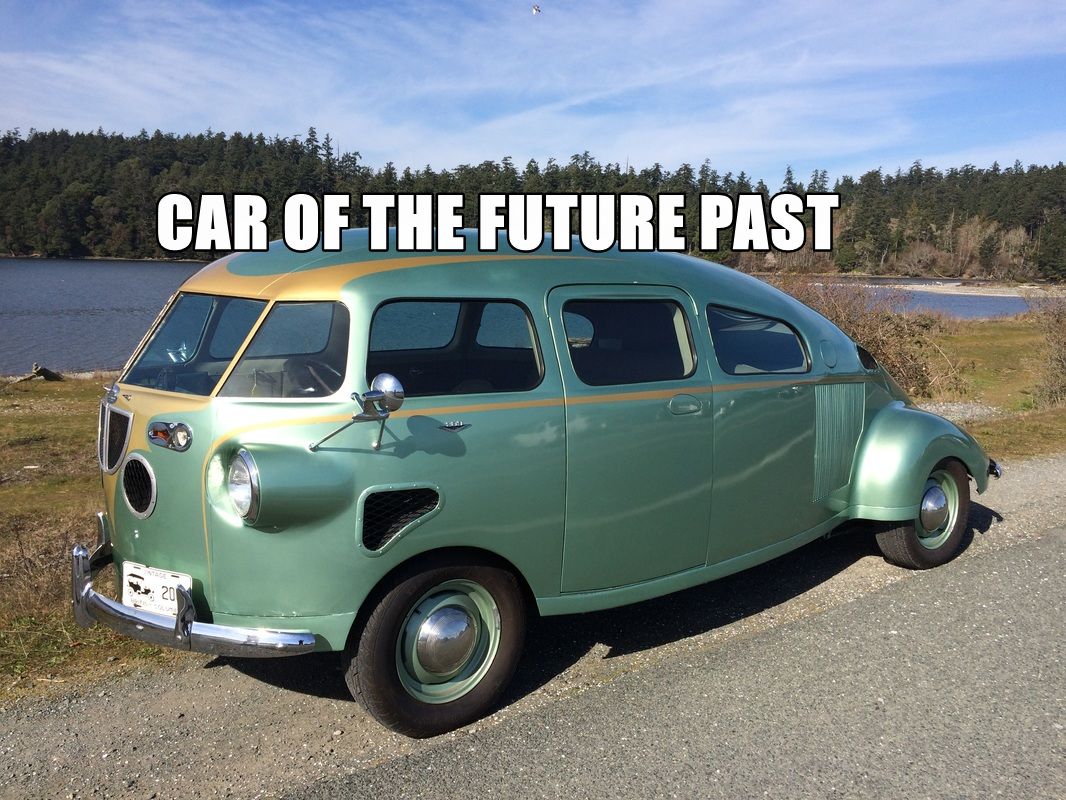
Everything seems better or, at the very least, more alluring looked at through nostalgia-tinted glasses, and this is no exception. This is The Teardrop or the Spirit of Tomorrow car, an instance of retro-futurism that you probably never heard of before.
Back in 1933, American inventor Buckminster Fuller revealed the first prototype of the Dymaxion car, which he imagined as the base for a land-water-air vehicle that would shape the future of mobility. Just like a bird can walk on land, float on water, and soar through the air, Fuller wanted the Dymaxion to be the human equivalent of that, through future iterations.More than just imagining an all-in-one future means of transport, the Dymaxion placed the highest emphasis on comfort and safety – albeit the latter was only in theory. With an 11-person capacity, it was also very aerodynamic and remains, to this day, one of the most outstanding examples of aerodynamic automotive design – so much so that it launched passionate and valid debates on whether the automotive future was streamlined.
One such discussion reached Horace Basil “Barney” Oldfield in Saanich, in Greater Victoria, British Columbia Canada. Oldfield was a distant relation of the American race driver Barney Oldfield, whose name he borrowed as a nickname, and he was also a very skilled fabricator and excellent innovator. And it all started with the Spirit of the Tomorrow car.
Specifically, it started with a 1939 newspaper article theorizing that streamlined design was there to stay in the automotive world. Using a 1938 Dodge chassis he had lying around in the workshop, he started working on the idea of an aerodynamic vehicle that would shape the future.
Before the actual construction, Oldfield put his own spin on today’s wind tunnel testing: he built wooden models of the vehicle and placed each one in the nearby Tod Creek, studying how water flowed around the obstacle and using his observations to inspire design cues and operate modifications.
The resulting vehicle was unlike any other car on the streets at that time. Measuring 200 inches (508 cm) in total length and 68 inches (173 cm) in height, it had a very blunt, almost square nose but an elongated body that tapered off at the end like a falling teardrop. Oldfield called it the Spirit of Tomorrow, but its shape also earned it the unofficial nickname of The Teardrop.
The old Dodge sedan chassis received a hand-formed steel and aluminum body and a Ford flathead V8 engine placed towards the rear for improved handling.
As he worked on this project, Oldfield also fabricated countless other vehicles: he built tractors out of scrap metals, built bulldozer blades, and designed and built advanced tools for the logging industry, including a patented logging truck and portable welders. He even built the country’s first portable TV antenna.
His skill and experience, as well as his passion for flying (he was a certified pilot), seeped into every aspect of the Spirit of Tomorrow car, bringing its execution and style to production-series standards. The avionics-inspired interior, all of it built from scratch, could seat as many as seven people, including the driver – as long as the five passengers riding in the back seat were friendly enough, as his nephew jokes today.
The Spirit of Tomorrow had electric turning lights, which was unheard of at the time. It had air-conditioning and, at one point, a fin on the roof for enhanced aerodynamics. It could top 110 mph (177 kph) and, while not exactly the easiest car to drive, it proved reliable and durable.
Unlike the three-wheeled Dymaxion that preceded and most likely inspired it, the Spirit of Tomorrow was stable on the road and didn’t topple at sharper turns. Oldfield used it as his daily driver for nearly two decades, driving it all across Canada and to the United States at fairs and on personal leisure trips.
In 1967, the car received a newer 299-cu-in 4.7-liter V8 engine from a Mustang, and continued to be used by members of the Oldfield family as a personal car. Later on, it would be reserved for special occasions only, such as weddings and other anniversaries. It was never a parade car, being better suited for cruising because of its 2-speed differential.
In 1986, the Spirit of Tomorrow was on display at the Expo 86 in Vancouver, BC, receiving a complete paintjob at the end of its tenure. It’s been displayed at various auto museums across the country since, but it remained the property of the Oldfield family. As you can see in the video below, as recently as 2021, it still ran flawlessly and could be easily taken out for cruising.
Despite its name, the Spirit of Tomorrow car never became the car of “tomorrow,” but not for lack of trying. It goes without saying that most predictions will never become true, regardless of industry or field. As far as automotive design goes, streamlined designs like this one or its predecessor, Dymaxion, never became the norm.
<!– –>
–>















